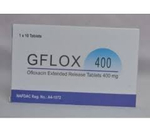broadband
Introduction to Broadband
Broadband is a widely recognized medication used to treat various bacterial infections. It is known for its effectiveness in targeting and eliminating harmful bacteria in the body. As a broad-spectrum antibiotic, Broadband is often prescribed to combat infections in different parts of the body, including the respiratory tract, urinary tract, skin, and eyes. Available in multiple forms such as tablets, injections, and syrups, Broadband offers flexibility in administration based on the specific needs of the patient. This versatility makes it a preferred choice among healthcare providers for treating a range of bacterial infections.
Composition of Broadband
The active ingredient in Broadband is Gatifloxacin, a potent antibiotic belonging to the fluoroquinolone class. Gatifloxacin works by inhibiting the bacterial DNA gyrase and topoisomerase IV, enzymes crucial for DNA replication and repair in bacteria. By disrupting these processes, Gatifloxacin effectively halts the growth and multiplication of bacteria, leading to their eventual death. This action makes Broadband highly effective against a broad spectrum of gram-positive and gram-negative bacteria.
Uses for Broadband
- Treatment of respiratory tract infections such as pneumonia and bronchitis.
- Management of urinary tract infections.
- Effective against skin and soft tissue infections.
- Used for treating bacterial conjunctivitis and other eye infections.
- Prescribed for certain types of gastrointestinal infections.
Side Effects of Broadband
- Nausea and vomiting
- Diarrhea
- Dizziness or lightheadedness
- Headache
- Insomnia
- Photosensitivity (increased sensitivity to sunlight)
- Allergic reactions such as rash or itching
Precautions of Broadband
Before using Broadband, it is important to inform your healthcare provider about any allergies, medical history, or other medications you are taking. This medication should be used with caution in patients with a history of tendon disorders or who are concurrently using corticosteroids. It is also advisable to avoid excessive sunlight or UV light exposure during treatment due to photosensitivity risks. Pregnant or breastfeeding women should consult their doctor before using this medication. Ensure to follow the prescribed dosage and complete the full course of treatment to prevent antibiotic resistance.
Specifications of Broadband Forms
Broadband is available in several forms to suit different patient needs:
- Tablets: Typically containing 400mg of Gatifloxacin, these are taken orally and are the most common form prescribed for adults.
- Injection: Used in hospital settings for severe infections, allowing for direct administration into the bloodstream for rapid action.
- Syrup: A suitable option for children or those who have difficulty swallowing tablets, offering an easier method of administration.
Conclusion
Broadband, with its active ingredient Gatifloxacin, is a versatile and effective antibiotic used to treat a variety of bacterial infections. Available in tablets, injections, and syrup forms, it caters to different patient needs and preferences. While effective, it is important to use Broadband responsibly under medical supervision to avoid potential side effects and ensure the best therapeutic outcomes. Always adhere to your healthcare provider’s instructions and complete the full course of treatment.
Similar Medicines
Available in 2 variations

Broadband 200mg Tablet
Broadband 200mg Tablet
Gatifloxacin (200mg)
strip of 5 tablets

Broadband 400mg Tablet
Broadband 400mg Tablet
Gatifloxacin (400mg)
strip of 5 tablets
Related Posts

1:15
4 Easy Home Remedies for Back Pain!

1:15
5 Amazing Benefits of Cucumber! Summer Superfood for Health & Weight Loss!

1:15
Do You Know Why Mango Is A Must-Have Fruit In Summer?

1:15
Top 5 Health Benefits of Muskmelon | Best Summer Fruit for Hydration & Weightloss!

1:15
4 Amazing benefits of eating Lychee this summer!
Disclaimer : This information is not a substitute for medical advice. Consult your healthcare provider before making any changes to your treatment . Do not ignore or delay professional medical advice based on anything you have seen or read on Medwiki.
broadband
Prescription Required
Manufacturer :
Novartis India LtdComposition :
gatifloxacin
















.svg)
